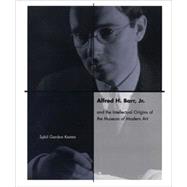
What is included with this book?
| List of Illustrations | p. x |
| Acknowledgments | p. xiv |
| Preface | p. xviii |
| Prologue: Knowing Alfred Barr | p. 2 |
| The Princeton Years | p. 18 |
| Morey as Mentor | |
| Barr and Mather | |
| Barr Moves On to Vassar | |
| Barr's Incipient Interest in Modernism | |
| Harvard versus Princeton | |
| The Fogg Method and Paul J. Sachs: Barr and His Harvard Mentor | p. 36 |
| Norton, the Father of Art History | |
| Kirstein the Student, Ruskin the Critic | |
| Initiation of Formalism at Harvard | |
| The Contribution of Berenson | |
| Professors of the Fogg Method | |
| The Fogg Museum | |
| Sachs, the Associate Director | |
| The Old Boy Network | |
| The Museum Course | |
| Barr Lectures on Modern Art | |
| Barr's Oral Exams | |
| Barr as Teacher, 1925 to 1927 | p. 86 |
| First Teaching Job | |
| Barr Proposes the First Course on Modern Art | |
| Barr and J. B. Neumann | |
| An Embarrassing Public Lecture | |
| Vanity Fair as a Source of Modernism | |
| Barr Delivers the First Course in Modernism | |
| Patrons of Modernism | |
| Barr's First Modern Exhibition | |
| The Little Magazine and Modernism at Harvard | p. 122 |
| The Prodigious Lincoln Kirstein | |
| The Expatriates | |
| Hound & Horn | |
| The Dial | |
| Ezra Pound | |
| Malcolm Cowley | |
| Matthew Josephson | |
| Hound & Horn and the Visual | |
| The European Trip | p. 146 |
| Barr Joins the Rebels in Europe | |
| Research in England | |
| Barr and Neumann | |
| Holland, Then Germany | |
| The Bauhaus School | |
| Two Months in Moscow, 1927-1928 | |
| Icons | |
| The LEF | |
| Eisenstein | |
| Rodchenko | |
| Kino | |
| VKhUTEMAS | |
| Lissitzky | |
| Tatlin | |
| Leningrad and Beyond | |
| Back at Wellesley | |
| Into the Future | |
| Modernism Takes Its Turn in America | p. 190 |
| Important Precedents | |
| The Harvard Society for Contemporary Art | |
| The Museum of Modern Art Is Launched | |
| The Multimedia Museum | |
| The First Modern Museum Appears in Hartford | |
| Kirstein Renounces Modernism | |
| American Artists Find Their Champion | |
| The Museum Reaches a Milestone | |
| Architecture, Barr, and Henry-Russell Hitchcock | p. 242 |
| Hitchcock the Historian | |
| The Influence of Le Corbusier the Rationalist | |
| Functionalism versus Architecture as Art | |
| Walter Gropius and the Bauhaus | |
| Hitchcock's Writings | |
| Barr's Writings | |
| Hitchcock's Appreciation of Oud | |
| The Russians | |
| Hitchcock's First Magnum Opus | |
| Painting toward Architecture | |
| General Principles of the New Style Established | |
| Barr's Review of Hitchcock's Book | |
| Philip Johnson and Barr: Architecture and Design Enter the Museum | p. 276 |
| Johnson and Barr | |
| Johnson and Hitchcock | |
| Johnson and Mies | |
| The International Style | |
| Style versus Functionalism | |
| The Exhibition and Its Catalogue | |
| Industrial Design | |
| The "Machine Art" Exhibition | |
| The 1938 Bauhaus Exhibition | |
| The Role of Architecture | |
| The Directorship at Full Throttle | p. 314 |
| "Cubism and Abstract Art" | |
| Kahnweiler's Precedent | |
| Barr Paves the Way for Greenberg | |
| The Chart: Modernism in Time and Space | |
| Collision with Meyer Schapiro | |
| Cubism into Architecture | |
| Pluralism | |
| Surrealism | |
| Picasso, 1939 | |
| Matisse | |
| Barr's Hidden Agenda | |
| Epilogue | p. 354 |
| Barr's Battle with the Trustees | |
| Fired | |
| Barr's Tenacity | |
| The New Director | |
| Building the Collection | |
| Notes | p. 378 |
| Illustration Credits | p. 460 |
| Index | p. 462 |
| Table of Contents provided by Ingram. All Rights Reserved. |
The New copy of this book will include any supplemental materials advertised. Please check the title of the book to determine if it should include any access cards, study guides, lab manuals, CDs, etc.
The Used, Rental and eBook copies of this book are not guaranteed to include any supplemental materials. Typically, only the book itself is included. This is true even if the title states it includes any access cards, study guides, lab manuals, CDs, etc.